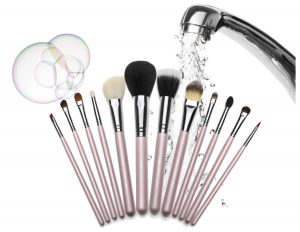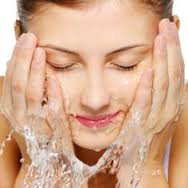
Don’t even ask me when I last did it…. I can’t even remember!! It’s one of those things everyone knows they SHOULD do, but hardly ever remember to – unless there’s so much gunk on them that its hard to miss, or your skin starts to break out. Yuk.
Also, dirty tools aren’t as effective when it comes to putting on make-up either. When working with a clean brush you know exactly what colours you’re applying and can better distribute the product.
It’s good practice to wash your brushes at least once a month. Giving them a good regular clean keeps them in good shape and prolongs their life.
Step 1 – Rinse brushes under running water to get off any excess product
Step 2 – Add a small amount of cleanser or shampoo to a small bowl of lukewarm water
Step 3 – Wash brushes gently, bristles pointing down so the water doesn’t go up the brush (as this can weaken the glue and shorten its lifespan)
Step 4 – Rinse brushes under running water again, and repeat steps 3 and 1 until all product is gone (the water runs clear)
Step 5 – Gently squeeze excess water out of the brushes, reshape them and lie flat to dry on a clean cloth/towel (rotating once or twice so they maintain their shape)
When was the last time you did that??

